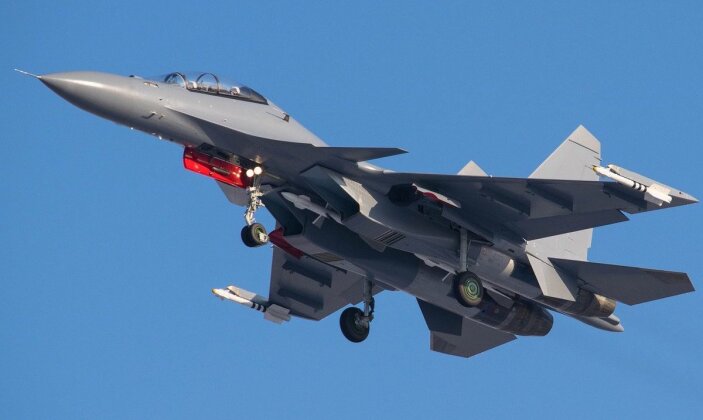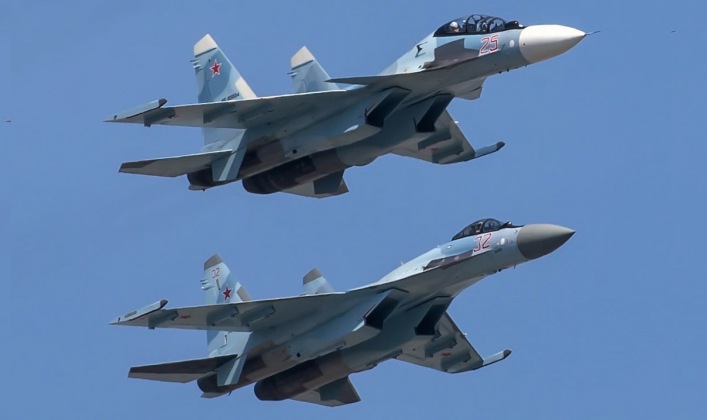The Algerian Air Force has long been a leading client for high-performance Russian and Soviet combat jets, with the country’s fleet considered to be the most capable in Africa and the Arab world. The country has invested particularly heavily in aerial warfare and air defence over the past decade, after an unexpected Western assault on neighbouring Libya led both Algiers and neighbouring Cairo to perceive an imminent threat to their security and invest in modern Russian aerial warfare systems. The backbone of the Algerian fleet is currently formed by an estimated 72 Su-30MKA Flanker heavyweight fighters, which other than the Su-35 operated by Egypt are considered the most capable fighters on the African continent. These are supported by smaller numbers of lighter MiG-29 and MiG-29M fighters, Su-24M strike fighters and MiG-25 heavyweight interceptors. Algeria has long been speculated to be interested in acquiring Su-35 ‘4++ generation’ fighters from Russia, which are based on the same Flanker airframe as the Su-30 but make higher use of composite materials and boast superior engines sensors and avionics and a lower radar cross section. Although there have been multiple unverified reports of an Algerian Su-35 order over the years, the possibility that Algeria will acquire the fighter has increasingly diminished.

During the Cold War years Algeria was the first client for the MiG-25 Foxbat heavy interceptor, which was USSR’s most capable aircraft offered for export in terms of air to air performance. With Russia having terminated the development of the MiG-25’s most direct post-Cold War successor the MiG-31M, the Su-35 was for many years considered the most capable aircraft to replace the Foxbat as a heavyweight high endurance interceptor. Acquiring the Su-35, which entered service in the Russian Air Force from 2014, would have been part of a longstanding trend towards Algeria acquiring the most capable Soviet and Russian fighters and interceptors available. Instead, however, Algeria is expected to acquire the more capable Su-57 fighter to replace its MiG-25s, while acquiring more Su-30s to replace its older MiG-29s. A number of factors are thought to have influenced this decision, including the fact that European states have increasingly invested in acquiring or developing fifth and sixth generation fighter technologies against which the Su-57 is considered much more capable of holding its own, with a range of sixth generation technologies being developed for the new aircraft ranging from advanced artificial intelligence and drone wingmen to hypersonic ballistic missiles and APAA guided air to air missiles. The Su-57 was built with the integration of sixth generation capabilities in mind, and those the Algerian Air Force is expected to acquire will have considerably more room to incorporate upgrades than the Su-35 would have.

For ‘4++ generation’ capabilities, Algeria has the option of upgrading its Su-30MKAs with Su-35 technologies to reach a similar performance standard. This would include the Irbis-E radar, or possibly a more capable design based on the Su-57’s AESA radar, as well as AL-41 engines which have a longer operational life and provide a superior endurance and flight performance. New sensors and avionics would also allow Algerian Su-30s to more effectively deploy a range of new munitions such as R-37M hypersonic air to air missiles, allowing them to exercise a very wide area control over domestic airspace beyond if needed. The fact that Algeria has based its defence requirements on the need to counter NATO member states with high performance fleets, which are seen to pose a serious threat to its security, has likely been central to its choice of the Su-57 over the Su-35 – much as it previously prioritised acquisition of expensive MiG-25s to counter Western and Israeli F-15s from the 1970s.
